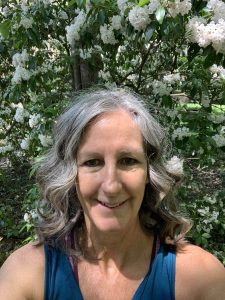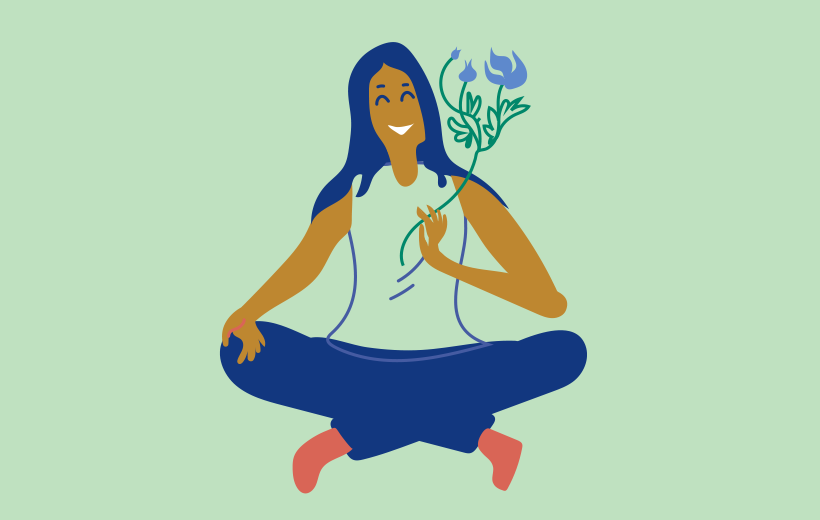A Student’s Journey Through the Abhidharma
By Terri Feil • 3 min read

PRACTICING THE NECTAR OF THE PATH liturgy was becoming somewhat rote. Each day, I felt torn. I wanted to practice the liturgy, yet I longed for the freedom to just sit. For me, the Abhidharma practices became the wings of freedom to sit and more fully experience what that meant.
The year-long transmission nurtures and sustains that energy, breathing new life into my liturgy practice. Lines within the liturgy take on new meaning, granular but vast. The lines from Nectar of the Path, “Like waves in the ocean, all things are impermanent. When causes and conditions come together, a result is sure to follow,” now burst with new meaning!
I need time to go deep. I also need inspiration, teaching, study, repetition, support, and community to maintain the momentum of depth. I know that about myself. And at this point in the transmission, I now understand – and witness in immense detail – how the undercurrent of push and pull in every movement, feeling, emotion, thought, and action is present. All of it leads to habitual tendencies, a solid sense of self, and suffering.
Listening to the interviews of contemporary voices like Joseph Goldstein and Beth Jacobs, hearing their beginnings with Buddhism and the Abhidharma teachings, built my excitement for what I would immerse myself in.
Then came the Essence of Buddhist Psychology course. In addition to the teachings of the Four Foundations of Mindfulness with practices and application, I began reading The Buddhist Psychology of Awakening by Steven Goodmanan in-depth guide to Abhidharma containing lists and matrices that deconstruct our experience. Do I understand all of it? No, but that’s ok.
The Original Buddhist Psychology by Beth Jacobs, which covers the same topic, is so beautifully written. Did I have a full understanding? No, but again, that’s ok. These are not quick or easy reads, but I had time to go deep, to read, contemplate, and practice within the transmission. I had time to share, listen, and practice with the community. Heart to Heart live sessions with Kunsang Palmo and Edwin Kelley, and Lama Trinely’s monthly teachings, untangled a lot and were deeply valuable.
Finally, the Buddhist Psychology Immersion course began. By now, I was absolutely hooked and eagerly awaited the meditation manual, Stainless Prajna. As I read the very beginning of the text, under “Homage to masters of the past,” Mingyur Rinpoche writes, “Here I will present methods of experiential guidance, without holding anything back.” A flood of gratitude and awe came over me.
“At this point in the transmission, I now understand – and witness in immense detail – how the undercurrent of push and pull in every movement, feeling, emotion, thought, and action is present. All of it leads to habitual tendencies, a solid sense of self, and suffering.“
— Terri Feil
I have a new appreciation of the first of the Four Thoughts: “Seeing its many wonderful qualities, I rejoice and delight in this human life.” How lucky I am to receive these teachings!
The meditation methods are clear and accessible, starting with the breath and body. Step by step, each practice once “mastered” — or in my case, an emerging proficiency — prepares us for the next. I cannot adequately convey how powerful and immediate these methods are! We experience breath. We experience body. Through these practices, we come to know breath, body, and the push and pull of feeling-tones, watching the causes and conditions at work.
We gain glimpses that things are not solid. Feeling, watching, knowing — my formal practice supports and spills into informal practice. Just a little. I catch the feeling-tone, emotion, or thought in daily life a bit more often before I make it solid.
I am still working within the course and practicing the Nectar of the Path. The freedom to “sit” was always there in the liturgy. My pull towards wanting to just “sit” was really a little nudge towards wisdom. Rinpoche’s words, “The suffering of beings is mainly produced by the mind. I must free myself from my self-created bonds,” are exploding with new complexity and appreciation.
May 2025

Terri Feil is a certified yoga teacher and an artist in residence for a local nonprofit organization that provides healing arts to people with cancer. She loves teaching yoga asana and breathwork in her classes and offering breathwork and art in the hospital infusion room to cancer patients.
Learn meditation under the skillful guidance of world-renowned teacher Yongey Mingyur Rinpoche at your own pace.


Working in a fast-paced corporate environment, Lita Sands applies key Joy of Living principles to not only keep her sanity but find connection and joy.

Meditation practice, like a relationship, unfolds gradually and requires patience, curiosity, and a willingness to engage with its layers over time. By understanding our own learning process, staying connected to the deeper meaning of practice, and adapting when challenges arise, we can sustain motivation and develop a lasting, meaningful connection with our path.

“Each time I come back to Joy of Living, I get something totally new out of it. I also appreciate it’s a very sequential path as well. Each piece flows into the other very elegantly. It’s a work of art really.”
If you enjoyed reading our articles, please join our mailing list and we’ll send you our news and latest pieces.